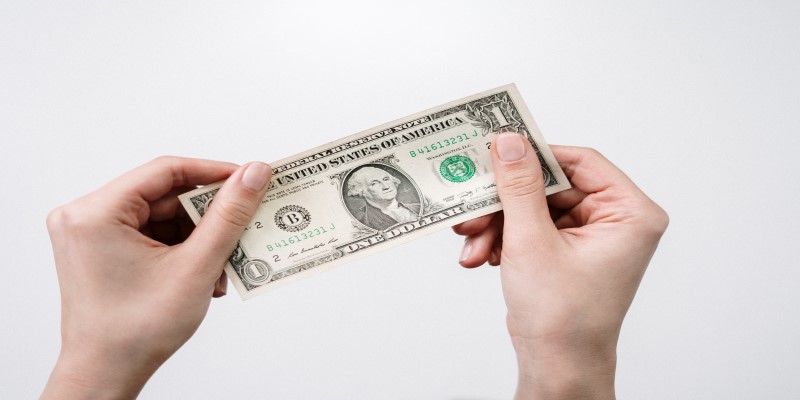Upon conducting an economic analysis, it becomes evident that the corporate tax rate cuts presently favored by the White House could not stimulate economic growth more effectively than an increase in government spending. By prioritizing the pragmatic requirements of the economy, policymakers can devise an economic stimulus scheme that yields more substantial outcomes compared to the administration's present proposals, which are predicated on a preference for business tax deadline reductions.
The fundamental concern that the administration fails to address during a recession is a decline in consumer demand. Rather than a scarcity of resources or labor, the primary obstacle that enterprises encounter at present is a decrease in demand for their products. Providing corporate tax rate breaks to corporations through increased funding without associating these breaks with novel business endeavors fails to address the underlying issue. Organizations frequently terminate personnel in times of decreased demand, irrespective of their financial reserves.
Such conduct may initiate a dangerous cycle. A further decline in demand for goods and services results from the reduced spending of individuals who are losing their jobs. Additional layoffs may result from this decline. Important as it is to break this cycle, increasing demand for the goods produced by American companies is one effective method. The 2009 US stimulus package addressed the global financial crisis by funding healthcare, education, and infrastructure.
Role of Government Expenditures in Packages
Employers cease workforce reductions and commence job creation in response to increased product demand. Enhancing expenditure on these goods ought to be the primary objective of a stimulus package. Increasing government expenditures can stimulate the economy in the short term by substantially augmenting overall demand.
Consider the case of surges in temporary unemployment benefits. By doing so, consumer spending may increase substantially. Unemployed family members experience a steep decline in income and are prone to allocating a significant proportion of any additional funds they obtain towards expenditures. While also supporting those unemployed due to unemployment, the extension of unemployment benefits has a direct economic benefit by retaining more workers at companies that produce the goods the unemployed would purchase. As a result, temporary increases in unemployment benefits support the unemployed while promoting greater employment stability.
Chair of the President's Council of Economic Advisers and proponent of a stimulus package, Glenn Hubbard, opposed increasing government program spending for two reasons. In his initial statement, "A dollar spent by the government is less for private businesses to spend." "New spending programs rarely vanish," he added as his second point. After economic downturns, these assertions become less credible. Only when an economy operates at capacity do we observe that government spending detracts from private business spending.
Consequences
Consequently, any additional government demand could shrink the resources available to the private sector. However, government spending does not supplant private-sector spending dollar for dollar when resources such as labor and factories are not entirely utilized. Government spending has the potential to stimulate private-sector activity and augment overall demand, even during periods of economic recession.
It's unclear if new spending programs last. Government expenditure grows over time, and recession-induced expansions often last long after the economy recovers. The Congressional Budget Office reported that federal spending as a percentage of the economy fell from 22.3% in 1991 to 18.2% in 2000. The 1980s saw higher government spending relative to the economy than the present. Federal spending will fall even more as a percentage of the economy after the recession ends, with some predicting its lowest level since 1965 by 2010. Congressional leaders who have proposed budget increases have stressed that these are short-term fixes, not entitlement program extensions.
Why Are Many Corporate Tax Breaks Ineffective Stimulants?
House stimulus bill and government relief plan corporate tax cuts may not boost economic growth. Eliminating the corporate alternative minimum tax and extending the time firms have to recoup losses would give corporations huge sums of money. However, these companies may not invest in new projects or employee retention.
Pouring money into a company without a plan is a good idea. Most companies are facing a drop in consumer spending, not capital. From 1999 to 2001, non-farm, non-financial corporations' total financial assets increased by over $700 billion (nearly 9%) and their liquid financial assets by over $100 billion (17%). Tax incentives should help businesses too tight for cash to take on new projects, but only if they do. Current stimulus plans' corporate tax rate rules don't target cash-strapped or growth-hungry companies.
According to a company spokesperson, General Motors, which has approximately $8 billion in liquid assets and no intention of increasing investments, would receive $833 million from eliminating the corporate alternative minimum tax. The primary beneficiaries of these business tax deadline reductions are shareholders, typically individuals with higher incomes. With little additional demand in the economy, this demographic is more likely to conserve income than to spend it. Undoubtedly, temporary corporate tax cuts tied to new investments have the potential to stimulate spending.
Uncertainty and Economic Stimulus Measures

According to recent data, the economic slump may end soon. Even so, the future continues to be extraordinarily uncertain. Many experts are concerned that the recession's severity may exceed initial expectations. Given the current uncertainty, any economic stimulus package must be able to adjust to changing circumstances. Ideal stimulus actions would increase as the recession deepens but decrease in magnitude as the recovery accelerates. One example of a successful strategy that adheres to these principles is the augmentation of unemployment insurance benefits.
However, a strong economic recovery may make some government tax reduction plans more expensive. Several people are concerned. To maximize its effectiveness, a stimulus package should adapt to economic changes. USA stimulus packages included tax credits and unemployment benefits to address the 2008 financial crisis. Unemployment benefits helped affected people quickly, while business tax deadline credits encouraged spending and investment. These policies significantly restored economic stability.
When in 2020, similar tactics were used worldwide. Government aid included corporate tax cuts, business loans, and individual financial aid. This method reduced economic impact and prepared for a full recovery. University of Massachusetts research shows that $1 spent on unemployment benefits boosts GDP by $1.61. Targeted stimulus measures multiply. Thus, real-time GDP growth, unemployment, and consumer spending trends should guide stimulus package expansion or contraction.

A Brief Guide: What Are Peer-to-Peer Payments?

View Authorized User Purchases

A Simple Guide to Closing Costs and Closing Fees

What Does It Mean By 3-6-3 Rule Slang and How Did Banks Use It?

How To Switch Financial Advisers

An Extensive RedfinNow Review 2023

The Impact of Salary Caps on Sports

In-depth Details To Know About VA Construction Loans

Getting a Bank Account as an Undocumented Immigrant: What You Need to Know

How the 5 Cs of Credit Impact Your Loan Approval

How to Find the Best Listing Agent: Everything You Need to Know
